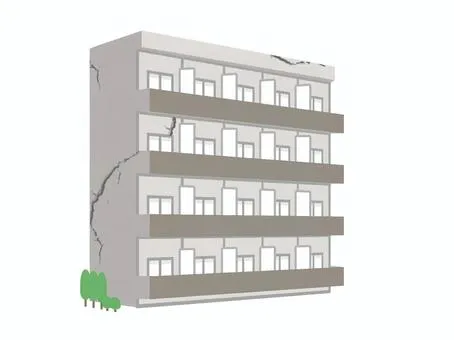Inquiries about building economic remaining useful life reports have been increasing. Behind this trend lie two realities: as buildings continue to age, soaring construction costs make redevelopment difficult; and for lenders that extend loans secured by buildings, the decision of how long a property will continue to retain economic value directly affects lending policy. It is therefore reasonable to assume that stakeholders wish to evaluate buildings using reports that reflects actual conditions.

What, then, is a building’s “useful life”? In architectural terms, physical useful life is defined as “the period during which a building—while maintaining structural safety—can be used without major repairs or reconstruction to its primary structural components (foundation, columns, beams, floors, roof, etc.).” Typical benchmarks are around 60 years for reinforced-concrete structures (RC) and 40 years for wooden structures. By contrast, economic useful life is often set by applying uniform, structure-based years (e.g., 50 years for RC, 35 years for wood for tax reasons) that tend to be shorter than physical life and insufficiently account for each building’s individuality—creating the risk of divergence from reality in value and collateral assessments. Properly understood, economic useful life is not merely the lifespan of the frame or equipment; it should mean the period during which a building functions economically, i.e., continues to generate income.
For example, an approach that derives cash flows after allowing for rent decline due to aging and rising repair/renewal costs is a rational method aligned with economic reality. The question to answer is not "How many years can it be used?" but rather "Until when can it generate income and maintain value?"
To conform to the original definition of economic remaining useful life, we need an integrated model that synthesizes multiple perspectives: the progression of physical deterioration, local market dynamics, and forecasts of future income. Achieving this requires the accumulation and use of extensive empirical data—such as each building’s maintenance and repair history, area rent levels and marketability, and cash-flow simulations—together with analysis using statistical methods. In place of conventional one-size-fits-all year settings, what is needed is a flexible, objective, cash-flow-based economic remaining useful life grounded in actual conditions and profitability. Such a perspective will also enhance the precision of sustainable building management, which is of considerable social significance.
Reprinted from Real Estate Management Journal Co., Ltd. “Weekly Real Estate Management” (with permission)

.webp)
.webp)
























